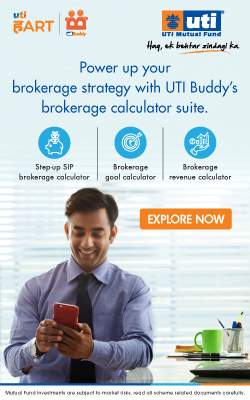 How an investment advisor gets compensated will be an increasingly important factor for an investor to select an advisor. As the advisor graduates from ‘hunter to farmer’ or ‘chemist to doctor’ it might be even more crucial than brand or pedigree.
How an investment advisor gets compensated will be an increasingly important factor for an investor to select an advisor. As the advisor graduates from ‘hunter to farmer’ or ‘chemist to doctor’ it might be even more crucial than brand or pedigree.
As the industry develops and begins offering a variety of compensation models, the mode of remuneration will be an important factor to clients. This article may provide some direction but there is no one size that fits all. Each advisor needs to find his own best solution. Issue of advisor compensation can be looked at in two ways.
1. Based on source of income and
2. Based on basis of income
Source of Income:
The advisor can be either compensated by
a. the product provider
b. the investor or
c. both.
Let us discuss the pros and cons of each.
a. Income from product provider: This traditional route has the virtue of easy implementation. Moreover, this route leaves no room for an argument with investors. However, it has two major problems.
1. An excessive conflict of interest and consequently it is not sustainable in the long term.
2. It is highly susceptible to regulatory change and also dependent on the whims and economics of the product provider.
Many advisors may argue that trail commissions offered by product providers eliminate conflict as they do not encourage churning. This is not the whole truth because there is still scope to tilt portfolios towards schemes/ asset classes that pay higher trail commission.
For advisors, sole dependency on trail commissions may be a high-risk affair as it is controlled by the product provider. The producer has the discretion to alter or remove it either due to regulatory changes or competitive pressure.
b. Income from both the product provider and client: This is an interim arrangement, which many advisors are trying to pursue. This is problematic because it is equivalent to being caught between the devil and the deep sea. It neither removes conflicts nor does it leave the advisor in a position of strength to demand fees from clients. Such duality can neither be scalable nor very successful.
c. Income from client: This is the ideal business model. Currently, it seems difficult to implement and the major hurdle is inbuilt commission in many products. They cannot be stripped of commissions and the benefit cannot be passed on to the investors. To overcome this, some advisors set off commissions earned against fees charged.
The downside here is cumbersome accounting and blurred legality. Otherwise, this is the best option as it gives control of income to an advisor.
Basis of income:
Compensation can be structured as
a. Transaction fees
b. AUM fees
c. Lump sum fees
d. Time based fees or
e. Performance-based fees.
a. Transaction fees: It is a common method of compensation especially in equity broking. Adoption of this model means that business is more focused on the transaction. There is no obligation on the advisor for ongoing monitoring and is most suitable for execution platforms. This system of compensation may be suitable for clients who are either self-directed or do not require ongoing monitoring. However, this model is not aligned with the random outcome that the client may experience due to specific transactions.
b. AUM fees: Many advisors have built their business model on trail commissions from mutual funds. This is one of the powerful ways of building business. It provides higher long term engagement and alignment with client. However, it may not be suitable for investors who are self directed. In fact, in USA there are regulations that prevent the advisor from charging AUM based fees to ‘buy and hold’ investors.
c. Time fees: These are charges decided by the quantum of time spent in advice very similar to fees charged by lawyers or accountants. A few financial planners use this method. It is simple to implement but it is not scalable as there are only 24 hours in a day.
d. Lump sum Fees: Many financial planners charge a lump sum to make a financial plan. Implementation of this plan may also generate some extra revenue.
e. Performance fees: In this case, advisor charges some extra fees if the returns are higher than the pre-determined hurdle rate. Typically, the fees will be defined as portion of excess returns. From an investor’s point of view, selecting an appropriate benchmark is critical. Since there is no free lunch in pursuit of higher returns, there is a danger of taking on excessive risk. One can select a hurdle which is linked to financial goals to achieve perfect alignment of interest.




